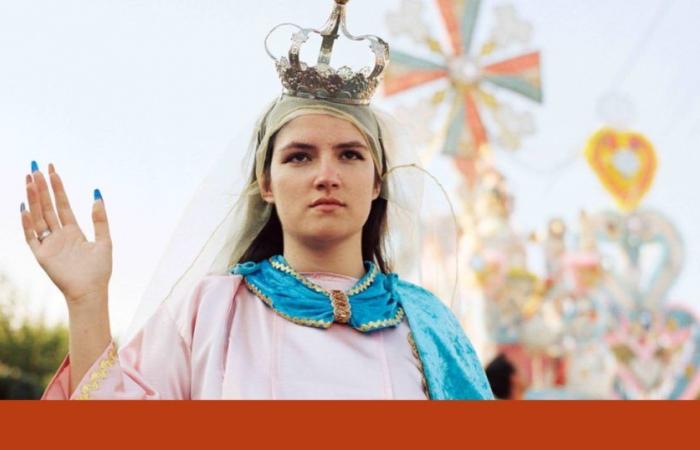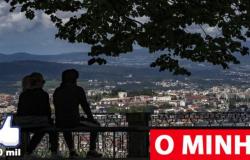In 2019, photographer Ana Paganini began documenting Portuguese festivities and religious processions. “I believe they are unique events, experienced in a very authentic way,” she tells P3. The pandemic caused a historic cancellation of these events “which had not been interrupted since April 25, 1974”. Thus, Ana waited for the resumption, using this time to reflect on the resilience of these festivities. Would you return after the pandemic?
“What I observed in the summer of 2022 was very moving”, he recalls. “I saw an enormous devotion to the saints and the images that had remained still for two years. I observed a strengthened cult of love and extraordinary devotion that gave people strength during the pandemic. I photographed the ecstasy of the reunion.”
The project The Blood of Jesus Has Not Failed Me Yetwhich remains in development, contains photographs taken by Paganini in Vila Real, in São Martinho de Anta, in Régua, in Constantim, in Sabrosa, in Sintra, in Praia das Maçãs.
The images reveal the reality of a country that is still markedly Catholic. The photographer’s lens meets the colors and textures of the costumes, the faces and looks that are “mostly female” or teenagers who still march in processions. “I photographed in analog because I believe it results in portraits with more presence. The square of the medium format analog camera also helped me organize the visual chaos typical of a procession.”
The 28-year-old photographer was born in Lisbon, but grew up in Vila Real – and this is a relevant detail. “I knew that these phenomena happened [religiosos], but what I saw was very surprising”, he recounts. “I tried to convey the dignity and seriousness with which people participate in processions, and to treat the issue with the respect it deserves.”
Between 2014 and 2018, Ana Paganini studied in England, at the London College of Communication, at the University of the Arts in London. “Having lived abroad, I realized how unique these events really were,” she says. “Perhaps these images may cause some strangeness to a person from a culturally Protestant country: their symbols will be strange, and who knows, fascinating. But, in this sense, the transport of these images to Lisbon, from the countryside to the city, is also in itself a movement that arouses curiosity.”
Paganini began taking photographs at the age of eight with her father, documentary photographer Albano Costa Lobo (1958-2007), and was nicknamed by the newspaper The First of January, as “the youngest Portuguese photographer”. Her father photographed the same processions in Trás-os-Montes between 1970 and 2000. “I intend, with this project, to make a book that includes my photographs and those of my father and in this way create a dialogue between times.” She likes to think that they both attended the same rituals, albeit at different times, and considers this meeting the fruit of an “inheritance from father to daughter”.
Paganini did not limit himself to photographing processions. “Each procession has its own dynamics, but I was interested in observing and following the preparations, the least visible phase of the processions.” He is interested in the entire process, “from the construction of the scaffolds, made in community with dedication and effort, to the rental of suits”. And he shares a curious detail. “I accidentally documented the growth or aging of the people who participated. I photographed a boy who, in 2019, acted as an angel in the São Frutuoso procession. The same boy, in 2022, in the same procession, was dressed as a Roman soldier.” Who knows if, next year, it will be Jesus Christ, he asks.
He approached these rituals out of historical curiosity and aesthetic interest. “I was interested in the idea of a ‘carnival fantasy’ being able to coexist with such serious experiences. It is the people themselves who give life and body to the figures of devotion. The faithful choose the characters they want to ‘resurrect’”. But without losing the traces of modernity, “like a teenager’s gel nails”.
The project’s photographs are currently on display at Casa dos Cubos, at the Center for Studies in Photography in Tomar, together with the work of photographer João Ferreira Paradise According to José Maria. On March 22nd, one of the photographs of The Blood of Jesus Has Not Failed Me Yet was also exhibited at the Hatton Gallery, in Newcastle, England, juxtaposed with the painting The Lamentation, by 16th century flamenco artist Hugo van der Goes. Paganini’s work has already been published in several magazines and newspapers, namely in ZEIT, The British Journal of Photography, Le Monde Diplomatiquebetween others.
Tags: Ana Paganini transforms religious processions spectacle light color Photogallery
--





